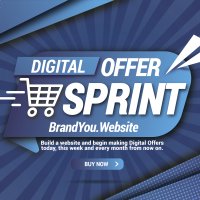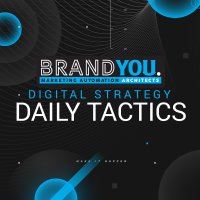Marketing Automation is becoming a mission-critical part of every company’s strategy. It provides the framework for coordinating all your digital marketing efforts into one big department-wide funnel that gets your prospects to purchase.
Marketing Automation makes use of Lifecycles Marketing and automates tasks by segment so leads go through a standardized process regardless of whether they came from a cold call, social media post, Google AdWords ad or organic website search.
The technology has moved from the nerdy side of marketing to become a fundamental part of how companies engage with their customers, manage their leads and ultimately scale and grow.
By putting into place effective Marketing Automation lifecycles, companies can achieve expected growth faster than ever before.
What are Marketing Automation Lifecycles exactly?
When it comes to your Digital Strategy, Marketing Automation is a highly essential tool that helps you deliver highly targeted and personalized experiences and messages to your audience across different channels – digital ads, post-click landing pages, emails, and more.
Your organization can convert potential customers into revenue-generating customers by increasing sales through targeted promotions and effective follow ups with buyers.

The Marketing Automation Lifecycles (MAL) are the 6 digital steps in a customer’ s journey with your company. They represent different touch points and interactions your customers go through in their journey with your company, and are as follows:
Traffic
Capture
Offer
Close
Deliver
Follow-Up
In this guide, we will provide you with a Marketing Automation Lifecycle overview as well as lifecycle examples and definitions.
We will also define its main characteristics, explain the key benefits of using it, and mention the different marketing automation software available to help you.
What is Marketing Automation Traffic?
1. Traffic refers to web users who visit a website.
Web traffic is measured in visits, sometimes called "sessions," and is a common way to measure an online business effectiveness at attracting an audience with an offer.
Traffic can also be split into several subcategories: organic, paid and so on. All the channels are equally important as they may have an additional positive impact on the development of a business.
Direct traffic is when users type the URL of your site directly into the address field of their browser.
Organic traffic is when users come to a website through search engines such as Google, DuckDuckGo, Yahoo, or Bing.
Paid traffic is when users are brought to a website by an online advertisement such as in search engine results or on social media platforms like Facebook or Twitter.
Social Media traffic may be more likely to click on a Facebook post than on a banner ad. Knowing this, you should adjust your strategy accordingly.
Social Web Traffic is people that come from sharing links on social media websites like Facebook, Twitter and LinkedIn.
Referral traffic results when someone clicks on a link to visit your site from another website such as from a blog post or comment.
When you're trying to find out what type of traffic you will get from Marketing Automation efforts, the first thing you need to do is evaluate your Digital Strategy.
What is a Capture System?
2. A capture system is a method of gathering leads for your business through your website.
The lead-capture form might be a web form, or an application to download content like an ebook or white paper. Capture systems are used by many organizations looking to gather emails from prospective customers.
The term "capture" comes from marketing terminology that refers to the process of getting data about potential customers, typically their contact information (name, address, phone number, email address).
The idea behind a capture system is that you're capturing that information in exchange for something from your site: a valuable piece of content like an ebook or white paper.
Truly successful capture systems are designed to be both easy-to-use and aesthetically pleasing.
Users should be able to enter their email address once and not have to take any extra steps for it to be stored in your database.
Additionally, you will want to make sure that your form is simple enough that it doesn't look like a spam trap.
If it looks too complicated or suspicious, visitors may abandon their efforts before they're even done entering their information.
Another thing to consider is that once people have given you permission to contact them through your capture page, they are likely to be open to hearing what you have to say.
This means that even if they don't respond initially when they receive your email messages or social media posts, they may still consider buying from you later down the road when your business is making monthly offers.
Making a Digital Offer Your Customer Can't Refuse
3. A digital offer promote an entire product line, a specific item or even just a single product.
One of the most effective ways to motivate customers to buy more products or services is by sending them Digital Offers. This can be done through emails, mobile notifications, websites or social media.
Here are four ways to craft a digital offer that will help you reach your goals:
What it’s for?
What it is?
Why it works?
How to buy?
The best digital offers are targeted, relevant, clear and constantly evolving. The main goal of a digital offer is to increase sales by offering customers product or services to purchase through their website.
The key to making digital offers work is to continually measure and optimize their effectiveness. Personalized digital offers yield higher response rates than non-personalized offers.
And, they convert better too. That's why it's essential to understand how your customers respond to digital offers through Marketing Automation so you can deliver the right offer at the right time in the right way.
Your Digital Strategy must be data-driven and take every possible opportunity to convert that Digital Offer into a sale.
Use Marketing Automation to Close More Deals
4. Marketing Automation helps you focus on what matters most — closing deals quickly.
The Close phase of the sales process can require a lot of people to do manual tasks.
Marketing Automation can help reduce the number of mundane activities from the sales process and make it more efficient.
Before you get to the deal closing it's easy for a sale to get lost along the way if it doesn't have a good lead-nurturing system in place or if it gets lost in the back and forth between buyer and seller.
By bringing all parties together at the appropriate time, including any needed paperwork or contract review — Marketing Automation can help keep your business more profitable.
With advanced eDocs and electronic proposal and contract features, your business can automate the proposal and contract process.
Scheduling meetings with potential clients is a time-consuming and usually frustrating process. Through Marketing Automation, online scheduling streamlines the entire appointment booking process, making it easier for both parties to find a time that suits the meeting.
Marketing Automation is the very best investment your business can make. When it is set up properly, you and your business will find that you are able to grow your business faster, more efficiently, and smarter.
Deliver What You Promise
5. Automate your delivery. Automated deliver systems help businesses deliver what they promise, when they promise it.
Delivering your customers' orders or services on time ensures that they'll keep coming back to you. But it's not just about efficiency and speed.
Marketing automation solves these problems and more by bringing together data from all your digital marketing efforts, tracking how customers use the different channels, and applying the information to each aspect of your delivery process.
Technology is advancing at such an exponential rate, it's almost impossible to keep up with all of the new trends that are being released.
There were two big problems with the delivery of physical products -- timing and tracking.
Timing. Physical products must be delivered at a specific time, usually on a fixed schedule, such as weekly or monthly. This means that your customers are waiting for you, rather than it being the other way around. If a shipment is late, this can cause problems for your customer.
Tracking. It's difficult to track physical shipments once they have been delivered. Even if you know a product has been delivered, who actually signed for it? When will it be delivered? These are all questions that cannot easily be answered with a physical product.
Treating digital product delivery like physical product delivery solves both of these problems.
If you deliver your digital products automatically on schedule, you can automate arrival times and eliminate any possibility of delay or mis-delivery.
This not only allows you to provide better and more consistent service to your customer; it also saves your business time and money by freeing up staff to focus on other areas of the business.
Marketing Automation means you’re in control with delivery. It lets you make the product available to your customers when they need it and how they need it, instead of making them wait for it or forcing them to fend for themselves.
Follow-up is the Secret Sauce to Scaling your Business

5. The key to follow-up success with email is to focus on delivering the right message to the right people at the right time precisely corresponding to where a prospect is in their Lifecycle Marketing segment.
Email will remain king as the most valuable and effective form of communication with clients and prospects up until the day when employers or software providers do not require to to have an email address.
The key to follow-up success with email is to focus on delivering the right message to the right people at the right time precisely corresponding to where a prospect is in their Lifecycle Marketing segment.
With Marketing Automation, you can automatically send out emails based on what stage a lead is in their journey towards becoming a customer. You can create different sequences, or drip campaigns, depending on where they are in their process of becoming a customer.
The most effective way to do this is by using Marketing Automation to track a prospect’s behavior and then to categorize these prospects into segments.
Using Segmentation with your Digital Strategy involves splitting up your subscribers into groups based on their behaviors, demographics and other factors.
Other benefits of email follow-up when using Marketing Automation are Welcome emails, Onboarding emails, Re-engagement emails, Abandoned cart emails, and Confirmation emails.
Marketing Automation can be incredibly useful for keeping in touch with your audience: it ensures that you remain top-of-mind with your customers and prospects on an ongoing basis. That way, when it does come time for them to buy something from you—or the time comes for them to recommend your business—they won't forget who you are or what you do.
The Key Takeaways
Marketing automation can provide solutions for any business, no matter what size. These solutions are geared toward increasing sales through better returns on investment.
To put this system in place you have to be consistent with your marketing efforts to align your goals and strategies with you sales efforts
You will have to be diligent and accountable to your analytics like click-thru rates, phone calls and visitor-to-lead conversions in order to see which strategies are the most effective.
With the proper Digital Strategy in place that is search engine optimized, social media sharing and an automatically generated newsletter, you can reach your goals of increased traffic and sales.
Marketing Automation is not a “magic wand” that will miraculously solve your marketing woes.
It’s a tool and it needs to be used properly in order to generate the desired results. As with any tool, you need to learn how it works, how to use it, and when to use it.
If you need help…
Schedule a strategy session with Brand You to see how we can help your Digital Strategy to life in your business.




